Hour of Devastation Prerelease Primer
The time has come. The Second Sun has aligned. Nicol Bolas is here.
And the plane of Amonkhet will never be the same.
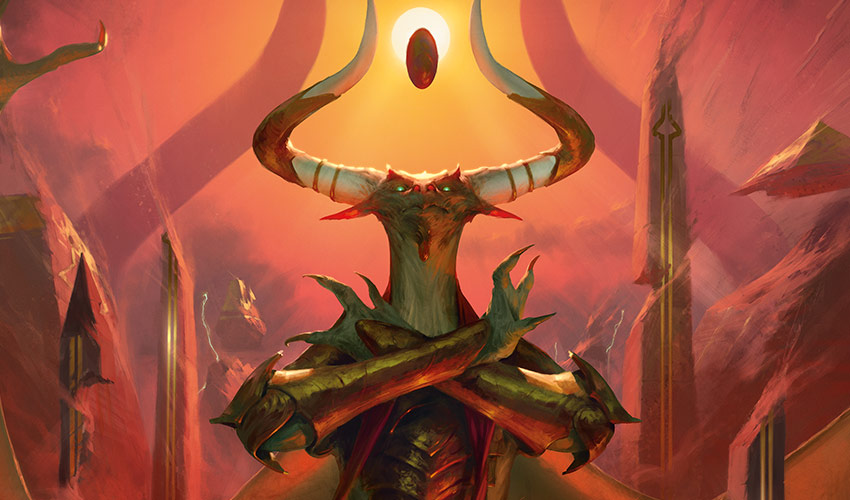
And who will be the one to wield the power of Nicol Bolas? You, of course!
The power of this mighty and villainous planeswalker is at your command in Hour of Devastation! You'll be able to unleash crushing spells and powerful gods upon your opponents. And where's the best place to begin your conquest? The Prerelease, of course!
So where exactly is a Prerelease, and what exactly should you be expecting at one? Read on!
The Hour of Prereleases
Prereleases are some of the best Magic events of them all.
No matter where in the world I am or what time of year it is, I always try and go check out a local Prerelease. And I'm not alone: many veteran Magic players will do the same! Prereleases are among the most popular events we throw.
Why? Because Prereleases are just some of the most fun you can have playing Magic!
You get to sit down, pick up some brand-new cards, and figure out how you want to use them at the same time everybody else is. It's an even playing field in a casual environment—where everybody shares all that bubbling energy and excitement around a new Magic set!
I visited my first Prerelease when I was just eleven and instantly fell in love with them. Sixteen years later, not much has changed!
Prereleases are great because the set is brand new, the footing is fairly equal as everybody plays with the set for the very first time, and you're all just relaxing and having fun exploring the new cards. It's a lot of fun for players old and new alike!
If you're a Sealed Deck veteran, you may want to skip ahead to the next section where I talk about some of the differences you can expect at your local store for Hour of Devastation. But if you're new to the wide world of Sealed Decks or are maybe just looking for a few extra pointers, then read on!
All right. So let's go over perhaps the most important part: finding a place to play a Prerelease! After all, you can't very well play if you don't know where to go. How might you go about that?
Well, if you don't already have a local shop you frequent, be sure to check out the store locator to find one near you! That store may even offer preregistration. Prereleases are some of the most popular events we put on, so be sure to check to see if the store preregisters. The best time to find out an event is full is decidedly not when you show up and learn you can't play, so be sure to look ahead.
So you've found your store. Excellent!
Now it's time to scheme ahead and prepare for the event. While you will be building your deck for the event with cards you're given when you get there, there's plenty to do besides just that.
Be sure to pack all the supplies you need to properly unleash your mayhem! For example, you may still want to bring a Standard deck to play for fun between rounds, a trade binder, pen and paper to keep track of life, and even a water bottle.
A Prerelease event tends to take about 4–5 hours, so make sure to set aside enough time for the entire event. And you're going to need some fuel with all that battling, so you may want to bring something like a granola bar or apple as well to snack on. (You may want to check with the local store as well; they might even sell some food there!)
Okay now, let's see. You have a store targeted to visit, and you've filled your pack with everything you'll need. You've even read through the recent Magic Story, so you're up to date on Magic lore. And, of course, you've taken a look at all the awesome cards in the Hour of Devastation Card Image Gallery.
Curious for more about what your first tournament might be like? Check out my article "Your First Tournament" for more information.
You're all set! Now it's time to actually go and open up some of those cards!
Plots within Deck Boxes within Plots
When you head into the Prerelease and sit down to play, you'll be handed this wonderful item! Check out the sweet deck box for this time around:
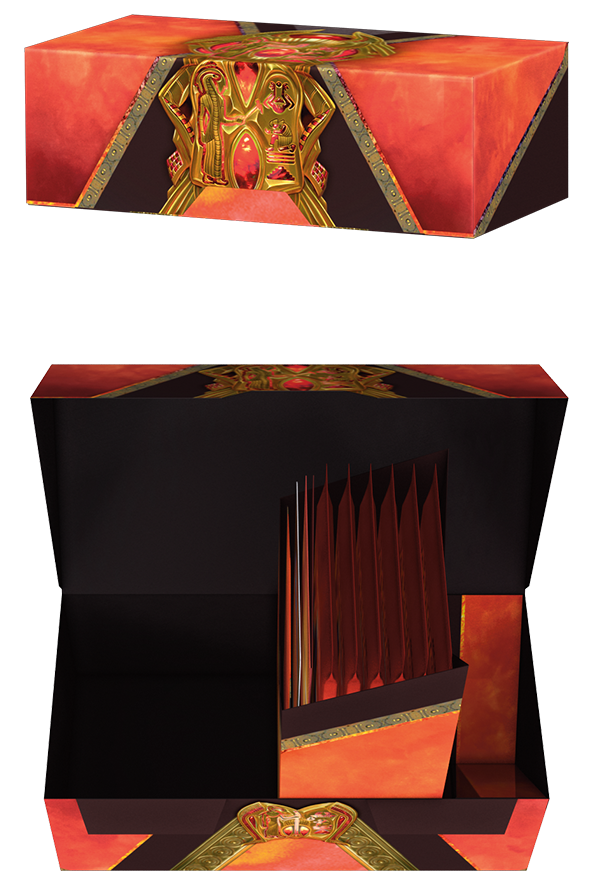
Gorgeous! It's certainly befitting of your majesty.
You'll find a couple things inside. For example, this lovely spindown D20:
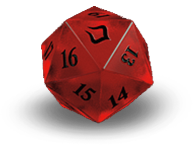
And, very importantly, you'll also get one of these. It's time to unleash the five Hours!
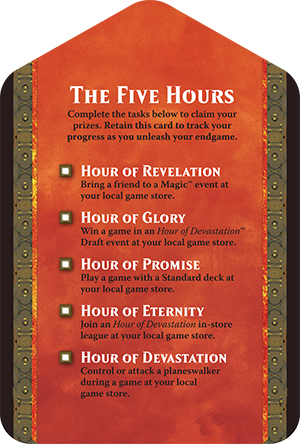
Remember the Five Trials from Amonkhet? Well, now they're here in their twisted, Bolas forms: the cruel Five Hours! You can accomplish these over the course of the next few weeks. And just by playing in the event, you'll have already completed the Hour of Revelation!
Complete these Hours, and you'll receive wonderful prizes befitting of a God-Pharaoh. Check these out:
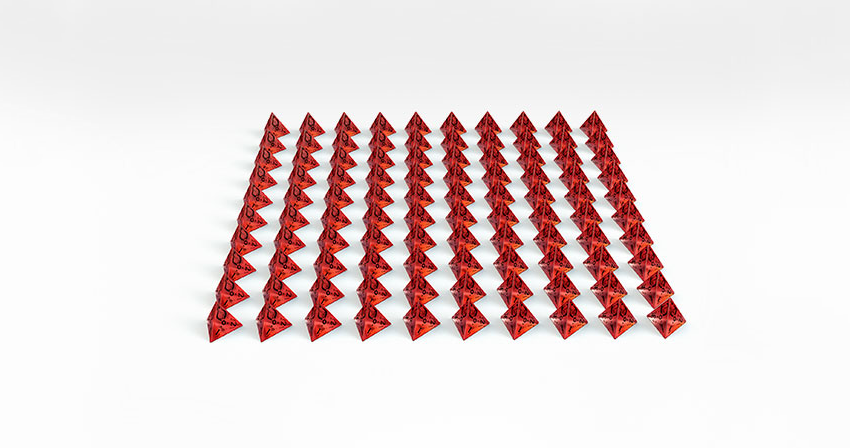
And speaking of prizes, on top of all that gorgeous bounty, there are still matches to be played—and perhaps some booster packs to be won! So now it's time to turn our sights to the cards themselves.
Unleash Your Scheme
Most important of everything inside your Prerelease pack are the six booster packs that will give you the cards you need to build your Sealed deck, plus your shiny bonus Prerelease card—which could be any rare or mythic rare in the set!
First things first: crack open those booster packs! Then, you'll have a stack of cards.
So . . . what now?
It's time to build your deck, of course!
Sealed Deck is a little different from normal deck building. You get to build a deck only using the cards in front of you, plus as many basic lands as you'd like. Also, unlike a normal Constructed deck where the minimum deck size is 60, you only have to play 40 cards.
The first thing you're going to want to do is figure out a method to pick which colors you'll be playing. I recommend playing two colors.
Some things that may draw you into specific colors are:
- A really strong rare you're excited about
- Plenty of "removal" cards that can deal with your opponent's creatures
- A lot of playable cards in that color
- A good "mana curve" in that color—meaning lots of creatures of different costs
Ideally, the colors you pick will have all four, but if two or three of those are true that's plenty good.
Whatever your method, you're going to need to narrow down what you're playing. If you get stuck at the Prerelease, feel free to ask the players around you for help. (You are allowed to do this at a Prerelease—everyone is there to make sure it's a fun event!)
Now you have your colors down. From there, how do you take everything you have and figure out which 22–23 cards you're going to want to put in your deck?
Here's one process that may help!
First, lay your creatures out in mana-cost order. This helps you see what creatures you're going to potentially have to cast at each part of the game. (Don't lay your noncreatures out at this point unless they're cards you are planning to play as soon as you have that much mana—for example, you will generally cast a [autocard]Watchful Naga[/autocard] on turn three whereas [autocard]Pull from Tomorrow[/autocard] isn't usually a turn-three play.)
A good "mana curve" of creatures is crucial to a successful Sealed Deck. You don't want to have a ton of cards at any single spot in the curve. It's important for you to be able to have a good mix so you can play your cheap spells in the early game and your expensive spells in the late game. As a very general rule for Limited, I would look to play something like this:
- 1 mana: 0–2
- 2 mana: 4–6
- 3 mana: 3–5
- 4 mana: 2–4
- 5 mana: 1–3
- 6+ mana: 0–2
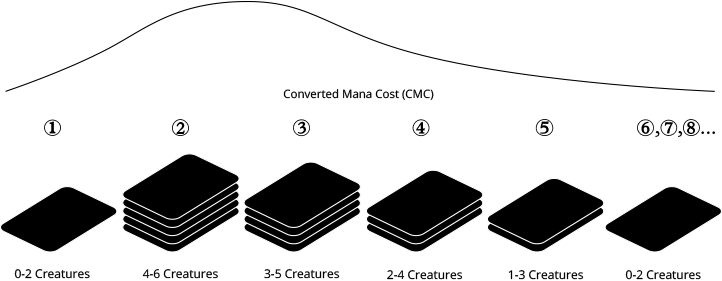
That's far from a hard-and-fast rule, but it's a good place to start. Cull your creatures down to these numbers by choosing your favorites.
Now that you have your core creature base figured out, it's time to add in spells! Pick your favorites among your colors to bring your deck to 22 or 23 cards, and then you're good to go from the spell side.
The spells you're going to want the most are what are called "removal spells"—these are the spells that permanently neutralize your opponent's creatures by either dealing damage, keeping them tapped, or just straight-up destroying them. Sealed Deck Magic is all about creatures, so you'll want to play most of the cards in your colors that can get rid of your opponent's creatures.
If you want to learn more about mana curves, you can also check out my article on how to build a mana curve by clicking here.
Interested in more tips? Here are a few more things to keep in mind for deck building:
- You can play more than 40 cards, but you really should stick to 40 if you can. Every card you play past 40 just means it's that much less likely you're going to draw that awesome rare you put in your deck!
- The land ratio you're looking at should be about seventeen lands to 23 nonlands. This isn't right 100% of the time, but most Limited decks end up looking like this, and in general, it's what I would want to have.
- Play a mix of cheap-to-cast and expensive-to-cast cards. If you have all cheap, small creatures, then a single big creature can shut you down. Likewise if you have all expensive, large creatures, you risk getting run over first. Stick to a mix that focuses on the two-, three-, four-, and five-casting-cost creatures. More games of Sealed Deck are won by casting a creature every turn starting on turn two or three than any other way.
- Evasion is important! Often, Sealed Deck games will get into stalls where both players have a lot of creatures and neither player can attack very well. Creatures with abilities like flying ensure that you can break through these creature stalls.
Two-Headed Giant
Some stores also support a version of Sealed Deck called Two-Headed Giant (often abbreviated "2HG") where two players team up against other pairs of players. Each pair gets two Prerelease boxes from which the players build their decks.
How does it work?
Well, the simple version is this: you and your teammate work together to build two 40-card decks. Then, you play against another pair of players in a one-game match.
How does this kind of multiplayer play out? It's simple: all your creatures and lands are separate, but you each share the same 30-point life total and take your turns simultaneously—plus you can block for each other too! To do the best you can, you'll need to work together to overcome the opposition.
Curious to learn more about how 2HG works and some of the intricacies of play? Be sure to check out the page all about it by clicking here.
Open Dueling
If the idea of spending a whole day playing a tournament doesn't fit into how you prefer to play Magic, or if you have less time and just want to experience the excitement of Hour of Devastation on your own time, you can get involved in Open Dueling!
You get a ready-to-play 60-card Intro Pack and use it to do battle against others participating in Open Dueling, including players participating in the main tournament who are between rounds! This is a great way to dip your toe into the water if you aren't sure the Prerelease is something you want to do or if you can't commit 5 hours to a Prerelease event. You can just play games in Open Dueling at your own leisure. Plus, it's fun!
Ask your local store about Open Dueling at the Prerelease, and prepare to battle!
Hour of Devastation Mechanics
Hour of Devastation is full of ways to crush your opponents! Or as we call them in R&D, new mechanics. You should definitely check out the mechanics article to get a full sense of what's going on—or, for shorter bite-size versions, check out these videos that cover the mechanics in depth:
The Hour Is Now
With Nicol Bolas at the height of his power, it's the perfect time to try and grab some of that power for yourself! The Hour of Devastation Prerelease is just around the corner. Take another look through the Card Image Gallery, make sure you're preregistered at your local store, and get ready to come out to the Prerelease and have a blast!
That just about covers our path to the Prerelease! Go forth and have fun.
Have any thoughts or questions? Feel free to send them my way! You can always get in contact with me by sending me a tweet or asking a question on my Tumblr. I'll be around!
Enjoy unleashing your own Hour of Devastation!
Gavin
@GavinVerhey
GavInsight

